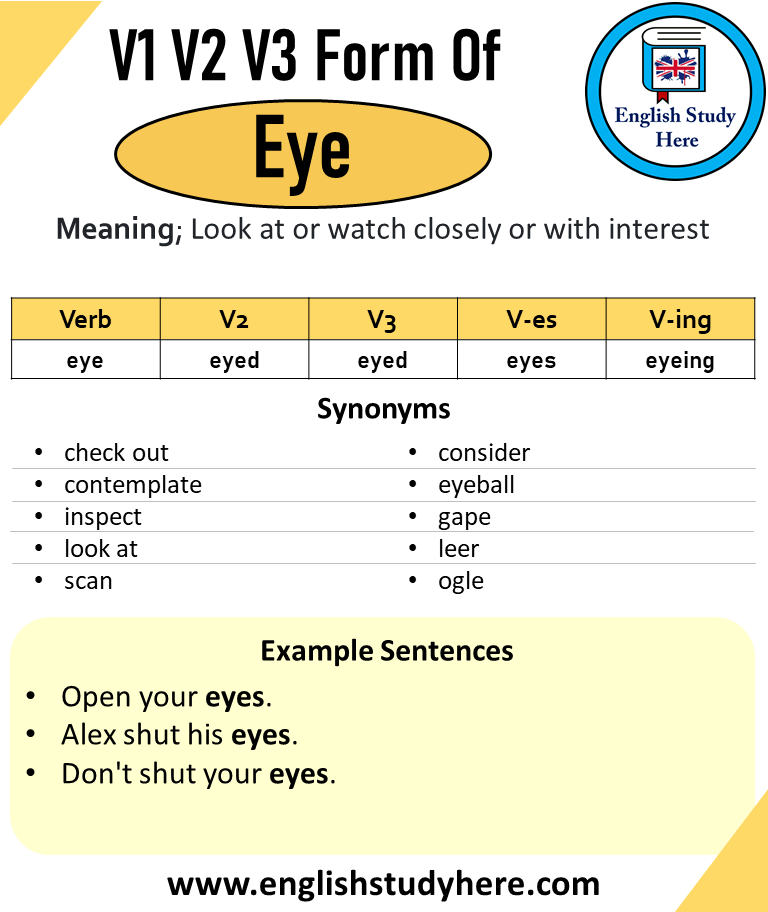Inspect Past And Past Participle Form V1 V2 V3 V4 V5 Form of Inspect
Are you curious about mastering the English language, especially when it comes to verbs? Understanding the different forms of a verb can significantly enhance your writing and speaking skills.
Today, let’s dive into the verb “inspect” and explore its various forms: V1, V2, V3, V4, and V5. Knowing these can not only boost your confidence but also impress others with your command over the language. Imagine being able to communicate more clearly and effectively, without second-guessing your verb usage.
Isn’t that an exciting prospect? Stick around, because by the end of this article, you’ll have a crystal-clear understanding of how to use “inspect” in all its forms, ensuring you’re never caught off guard in a conversation or written piece again.

Credit: englishstudyhere.com
Inspect Verb Forms
The verb “inspect” helps us talk about checking things. It’s a regular verb. The base form is V1: inspect. When we say it happened before, we use V2: inspected. For actions already completed, we use V3: inspected.
For continuous actions, use V4: inspecting. When talking about the third person, add an “s” to make it V5: inspects. These forms help us make sentences.
Usage Of Past And Past Participle
Past tenseis used to talk about things that happened. The verb “inspect” becomes “inspected”. It shows an action completed. For example, “He inspected the house yesterday.” This tells us the inspection is done.
The past participleform is also “inspected”. It is used with “has”, “have”, or “had”. It shows actions that were completed. For example, “She has inspected the car.” This tells us the car inspection is finished.
| Base Form (V1) | Past Simple (V2) | Past Participle (V3) | Present Participle (V4) | Third Person Singular (V5) |
|---|---|---|---|---|
| Inspect | Inspected | Inspected | Inspecting | Inspects |
Examples Of Inspect In Different Tenses
Inspectedis the past tense of inspect. It means checking something before. You inspectedthe car yesterday. That means you looked at it closely to see if it was okay.
The past participle of inspect is also inspected. This form is used with helping verbs. You have inspectedthe bike. It means you finished checking it.
The present tense form is inspect. I inspectmy homework before I turn it in. It means I check it carefully.
Inspectingis the present participle form. It means you are checking something now. I am inspectingmy room for lost toys.
The future tense form is will inspect. It means you plan to check later. Tomorrow, I will inspectmy garden for weeds.

Credit: englishgrammarhere.com

Credit: engdic.org
Conclusion
Exploring verb forms enhances language skills. Understanding “inspect” in different tenses helps. Practice using V1, V2, V3, V4, and V5 forms. These variations enrich communication. They offer clarity in expression. Correct verb use prevents confusion. It aids in clear writing and speaking.
A strong grasp of verb forms boosts confidence. It supports effective learning. Regular practice makes it easier. It also improves comprehension. The more you use them, the better you get. Keep learning and practicing. Language is a journey. Enjoy exploring verb forms and their uses!






